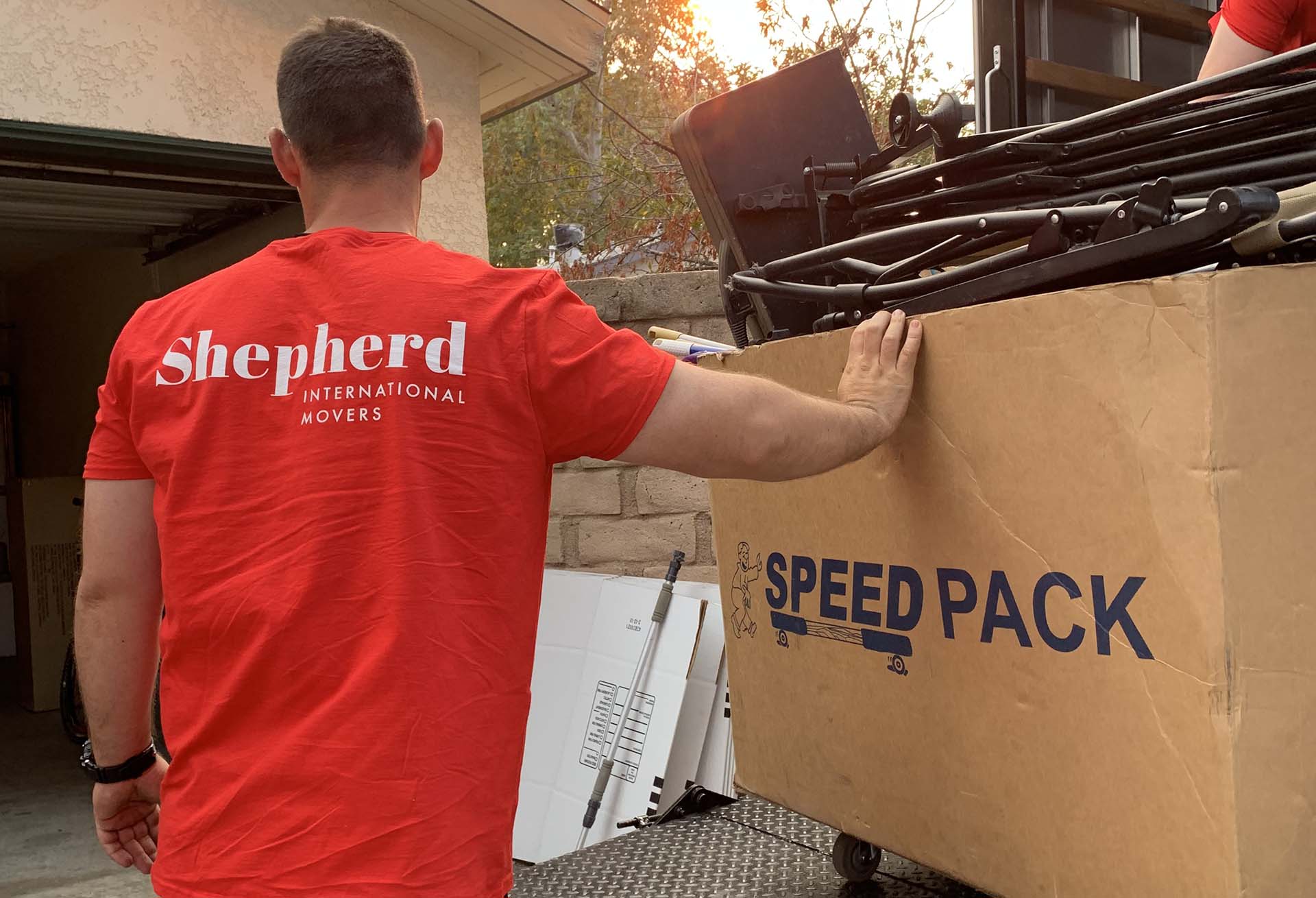

If you’re planning on moving to a different climate, there are some things you need to know in order to make the transition as smooth as possible. Here are some tips and tricks to help you get adjusted to your new surroundings after moving abroad.
The idea of packing up your life and relocating across the world is both exciting and terrifying. But for those who are considering it, it’s important to be as prepared as possible and have a few relocation tips up their sleeve. It doesn’t matter whether you’re planning to move during summer or whether you’ll be living overseas in a tropical or cold climate – with the right preparations, the transition will run smoothly.
Before Moving to a Different Climate Do Some Research
Why not take a little additional time to research the climate in the place you’re relocating internationally to, so you can easily adjust to the new country? You likely spent a lot of time researching the best international moving company and comparing different international moving services. But before you pay for the packing services, it might be good to know what you should pack.
Many people can identify “hot” and “cold” regions, yet the warm climates of South Florida and Southern California, for instance, are very different. On the West Coast, you’ll still need some heavy gear for chilly evenings, while jacket weather is less common in the humid climate of Florida. It’s the same when you want to move to one of the friendliest countries in the world. Travel websites can be a useful resource if you’re planning a move to another country because they frequently provide more frank facts and useful advice than any Chamber of Commerce.
Pack According to the Place You Are Moving To
Before your relocation, you don’t have to (and definitely shouldn’t) buy a brand-new outfit. A wonderful approach to get to understand the neighborhood stores and catch up with local fashion is to shop for new clothes after you move. The days immediately after your move will be busy enough without having to add “emergency” buying to your to-do list because you didn’t know what to pack.
Choose two or more lightweight clothing, such as blouses and shorts and a pair of slip-on shoes or sandals, if you’re about to move abroad to a warmer area. A thick coat and a nice pair of boots are necessary if you’re relocating to a colder area in the winter. Additionally useful are some warm shirts, jeans, and underwear. Try shopping online if your neighborhood retailers don’t have any suitable items available.
Some Fabrics and Styles Go Better With Some Climates
The majority of people are aware that natural fibers, such as cotton and linen, allow for more “breathing,” making garments made of these materials more comfortable in hotter climates. However, if you want to wear cooler clothing, be sure to select lighter materials like seersucker and poplin rather than heavy selvage denim like those used to manufacture blue jeans.
Additionally, avoid choosing a jacket with a lining because it retains heat when you’re buying one for a warmer climate. When it comes to cold weather, people frequently believe that their fashionable leather boots will keep their toes warm. However, unless the boots are lined, they are unlikely to do so. Additionally, if the boots are worn in snow and ice the leather is likely to discolor and become brittle. The best boots are practical ones with rubber soles, so put them on your checklist for relocating abroad.
Don’t Forget to Include a Weather-Appropriate Outfit in the Bag of Essentials
Once you’re confident that you have enough proper attire to get you established in your new place, keep at least one outfit readily available in a box with other essentials for your initial day in your new house. The box should also contain necessities such as toiletries and cooking equipment. To ensure easy access to your box, carefully mark it and instruct your expert movers to load this last and unload it first.
Donate the Clothes You Don’t Need
When you’ve decided which climate-specific clothes you won’t be taking with you, bag it up (or have your moving company do it for you) and donate it to a nearby charity. Take into account that you may wish to keep some of it if you want to visit the area again. Many options are available in most communities, including Goodwill and the Salvation Army. Do not forget that you can contribute things other than clothing. Take pictures of your products and request paperwork from the charity you donated them to if you wish to claim a tax exemption for your donation. You will have to make an educated guess as to what the things’ “fair market worth” is.
Prepare to Alter Some of Your Habits When Moving Internationally
If you’re about to move overseas to a new climate, there are a few things you should keep in mind in order to stay comfortable. Depending on where you’re going, the weather could be drastically different from what you’re used to. Here are a few tips on how to adjust your habits when moving to a new climate:
- Be prepared for extreme weather conditions. Culture shock isn’t the only thing to overcome. If you’re not used to very hot or cold weather, it’s important to be prepared for the extreme conditions that can come with a new climate. Make sure you have the appropriate clothing and supplies (like sunscreen and sunglasses) to protect yourself from the elements.
- Drink plenty of fluids. In hotter climates, it’s important to stay hydrated by drinking plenty of water. In colder climates, you need to make sure you’re hydrated enough, too.
- Adjust your sleeping habits. Depending on the climate you’re relocating to, you may need to adjust your sleeping habits. If it’s hotter, you may want to sleep in a cooler room or take advantage of air conditioning. If it’s colder, you may need to invest in warmer bedding or sleep with extra blankets.
- Be aware of the risks of heat stroke and hypothermia. In extreme conditions, it’s important to be aware of the risks of heat stroke and hypothermia. Know the symptoms and what to do if you or someone you’re with starts to experience them.
By following these tips, you can help make sure you’re comfortable in your new climate and avoid any health risks that come with extreme weather conditions.
If You Have Pets, Know They’ll Need Some Adjustment, Too
One of the challenges you’ll face when relocating abroad is how to deal with your pets and their needs. If you’re not taking them with you, you’ll have to find a good home for them and make sure they’re well taken care of. If you are bringing them with you, there are a few things to keep in mind.
First, your pets will need to be able to deal with a new climate, so you should make sure they have time to slowly adjust to the new temperatures. Secondly, your pet will need to be able to handle different types of food. In some countries, the food may not be as good quality as what your pet is used to, so it’s important to make the transition slowly. Finally, they will need to be prepared to avoid different types of parasites and diseases. It’s important to get them vaccinated, take precautions and bring all the necessary paperwork, too.
The following video offers advice on how to slowly change your pet’s food.
Know That the Cost of Your Utilities Will Be Different
When leaving a colder environment for a warmer one or vice versa, be prepared to focus on utility expenses. If you live in a warm environment, you’ll probably spend more money cooling your home than you will on heating it once you move. Similarly to this, if you are going to live in a cold environment, you’ll probably spend more money heating your house.
Additionally, do your homework on the local utility providers to locate the greatest deals and solutions for your requirements. Last but not least, remember to inform your present utility provider of your relocation so that they can transfer or discontinue your service. You may ensure a seamless transfer to your new home by following these procedures.

Ensure Your Car Is Prepared for the New Weather Conditions
If you’re relocating to a new country with a different climate, there are some things you should do to prepare your car for the change. Preparing it for a different climate is an important part of making sure your move goes smoothly. If you do everything right, you can help avoid any problems down the road. Here are some crucial relocation hacks to prep your car the right way.
Crucial Steps in Vehicle Preparation
First, check the tires. In colder climates, you’ll need tires with good tread to grip the icy roads, and in warmer climates, you’ll want tires that can handle the heat and the increased chance of rainstorms. Next, check the fluids. Make sure you have the right type of oil for the climate you’re relocating to, especially as newer cars may also require a different coolant. Finally, consider getting your car serviced before the move. A good service will include a check of the brakes, suspension, and other parts that may be affected by the change in the climate. This is also important when you want to ship your vehicle overseas.

Hire Professionals to Help While You Are Preparing for the New Climate
If you’re planning to move to a big city across the world, hiring professional movers can help make the process a lot smoother and less stressful. Here are a few things to keep in mind when hiring international movers:
- Make sure the company is reputable and has experience with international moves. Ask for references and read online reviews.
- Get a written estimate of all costs involved in the move, including any potential customs fees or other charges.
- Ask about insurance coverage for your belongings. Make sure you understand what is and is not covered in case something gets damaged during the move.
- Find out what kind of support the company can provide during the actual move, such as helping with documents needed to travel abroad or providing transportation to and from the airport.
- Make sure you understand the company’s policies regarding cancellations, changes, and refunds in case you need to make any changes to your plans.
Following these tips will help you find a reputable and experienced international relocation company that can make your move easier and less stressful.
Pack Properly, and Call Your Friendly Movers
In the end, when you’ve finally made the decision to move to a different climate, it’s time for congratulations! This is a huge and exciting step that brings many benefits. While it may be daunting at first, these great tips and tricks can help make your transition smooth. From packing properly to researching your new destination, a little bit of planning goes a long way. And when it comes time to actually make the move, don’t forget to call the professionals. They can help take care of all the heavy lifting so you can start enjoying your new home worry-free.









